Her Noise Archive / Responding to the Her Noise Archive - a collective curatorial process
‘…meaning deconstructs & regenerates itself through time…’
Her Noise was a visionary curatorial research project investigating gender in sound-led practice with a major exhibition at South London Gallery in 2005, initiated by Lina Džuverović and Anne Hilde Neset. The project’s archive has been housed at UAL Archives and Special Collections where it has become a resource for teaching and research since 2012. Each year students make their first piece of work on the MA Sound Arts course in response to the archive: ‘perhaps the most productive outcome we could have hoped for’ . (1 Džuverović, Lina . 2020 . “Is The Honeymoon Over? The Tumultuous Love Affair between the Museum and the Arts of Sound .” Circuit: musiques contemporaines, 30 , 1:11 – 23)
During the COVID-19 Pandemic, Cathy Lane & Irene Revell (CRiSAP) initiated a collective curatorial process with then current students Will Crosby, Boris Gétaz, Gabrielle Harnois-Blouin & Nicol Parkinson, to explore these works made in response to the Her Noise Archive. Over the last few years, we invited as many alumni as we could reach to submit their response. From forty or more works, we devised a collective approach for selecting the much smaller number that we have included here, keeping a critical eye on the process itself, the inevitable limits of any ‘objective’ criteria, questions that speak to the heart of the original Her Noise project. We hope the seven pieces below give a glimpse of the diversity of practices and approaches amidst this extremely rich wider body of work.
In partnership with:
Jinjing Tan / The courage of her voice
This work considers the relationship between the Her Noise Archive and Chinese feminist archives, exploring self-definition, and the courage required to make one’s voice public.
Iris Chun-Tzu Chang / Melting Voice
ice - water - text - ink - paper - glass - marbles - event scores
Melting Voice 是我於2018年末開啟的藝術研究計畫,對於非物質(物質)記憶之於存在主體的探問,對於(聲音)⾝體的死亡與再生的想像,以及療癒與轉化傷痛的可能。
Melting Voice is an ongoing research project. Inspired by unreadable messages sent by my grandmother after her death, the decontextualised texts stored on my cellphone become mystery, meaning deconstructs and regenerates itself through time, the space we create for imagination grows and the dynamic relationship interchanging between the giver and the receiver. We engage in the moment ice melts and freezes again and again — witness the fading voice, the fading memories, they become movable existence, transcend time and space.

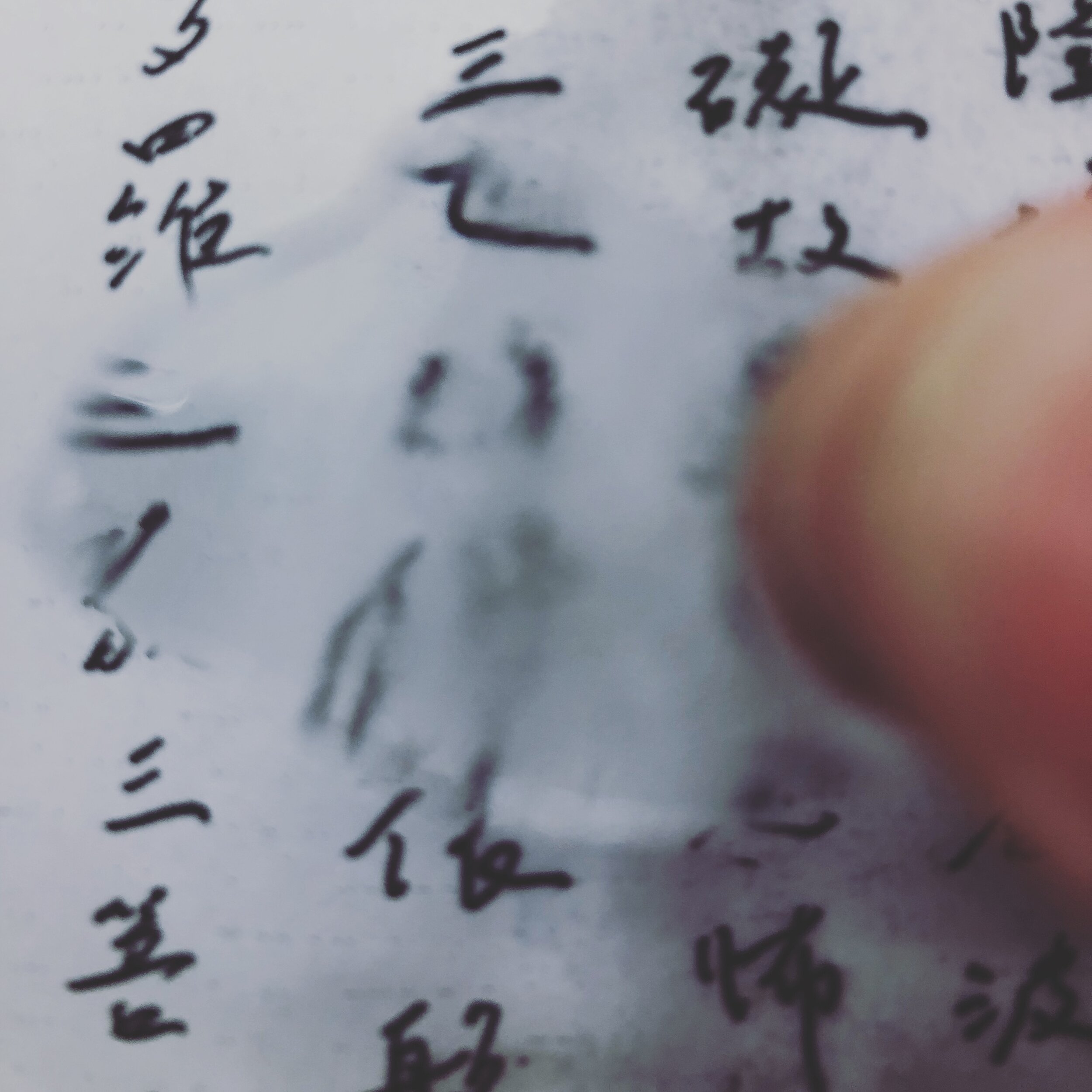
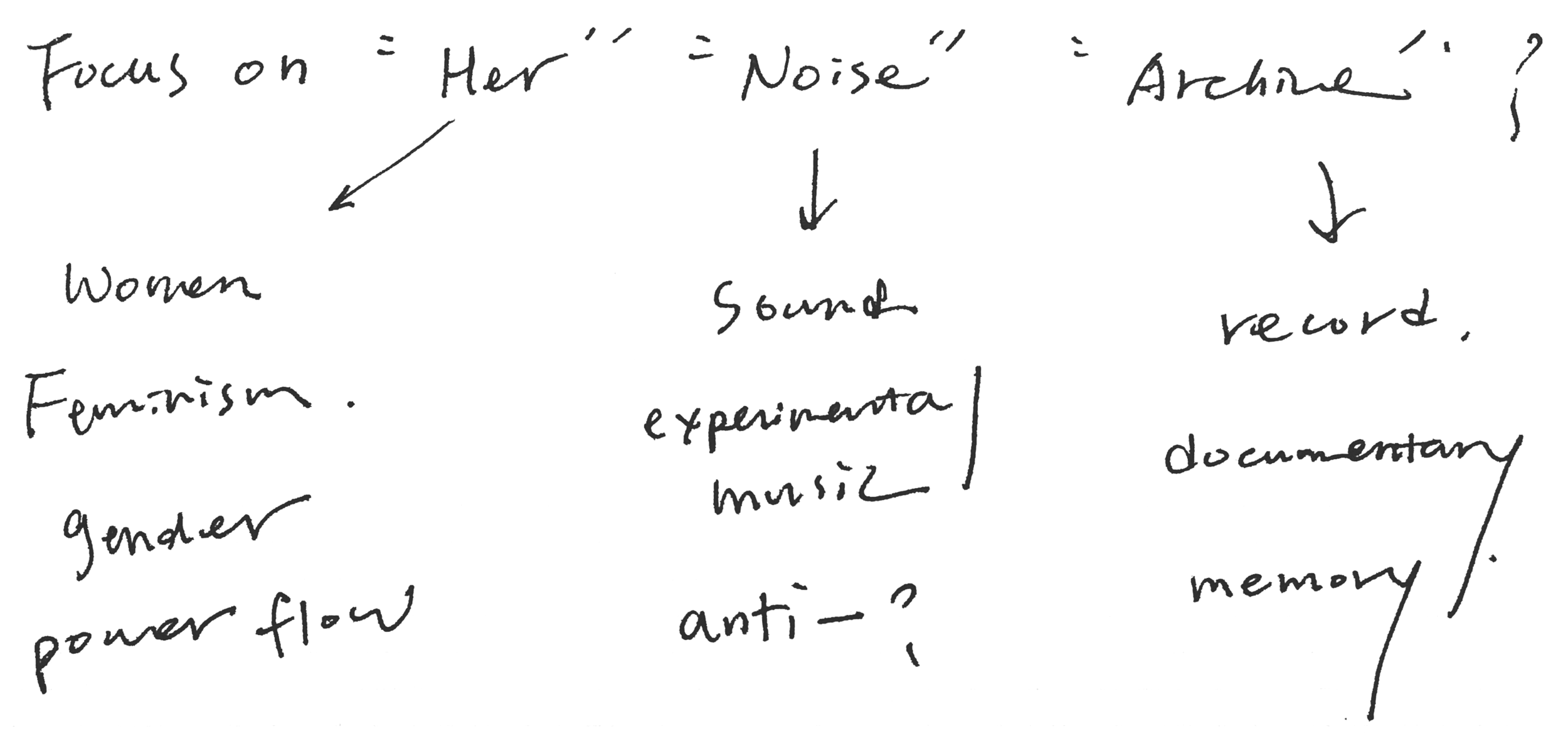
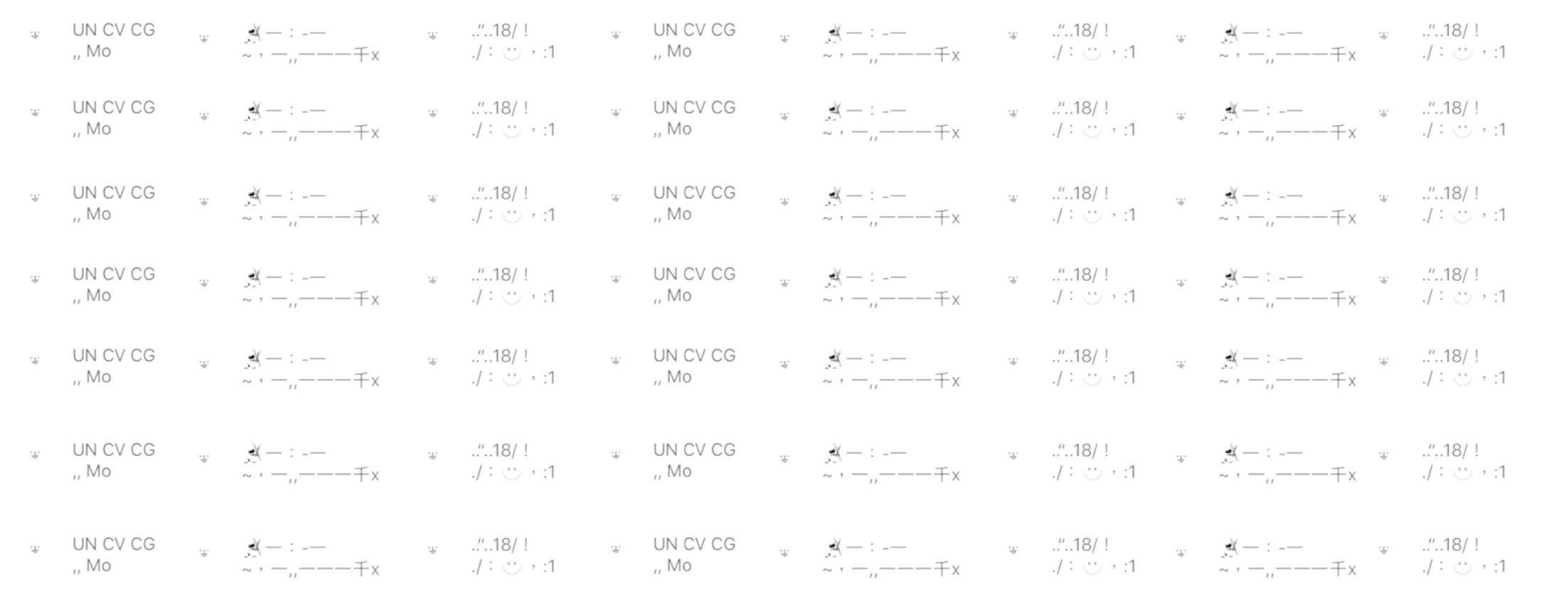
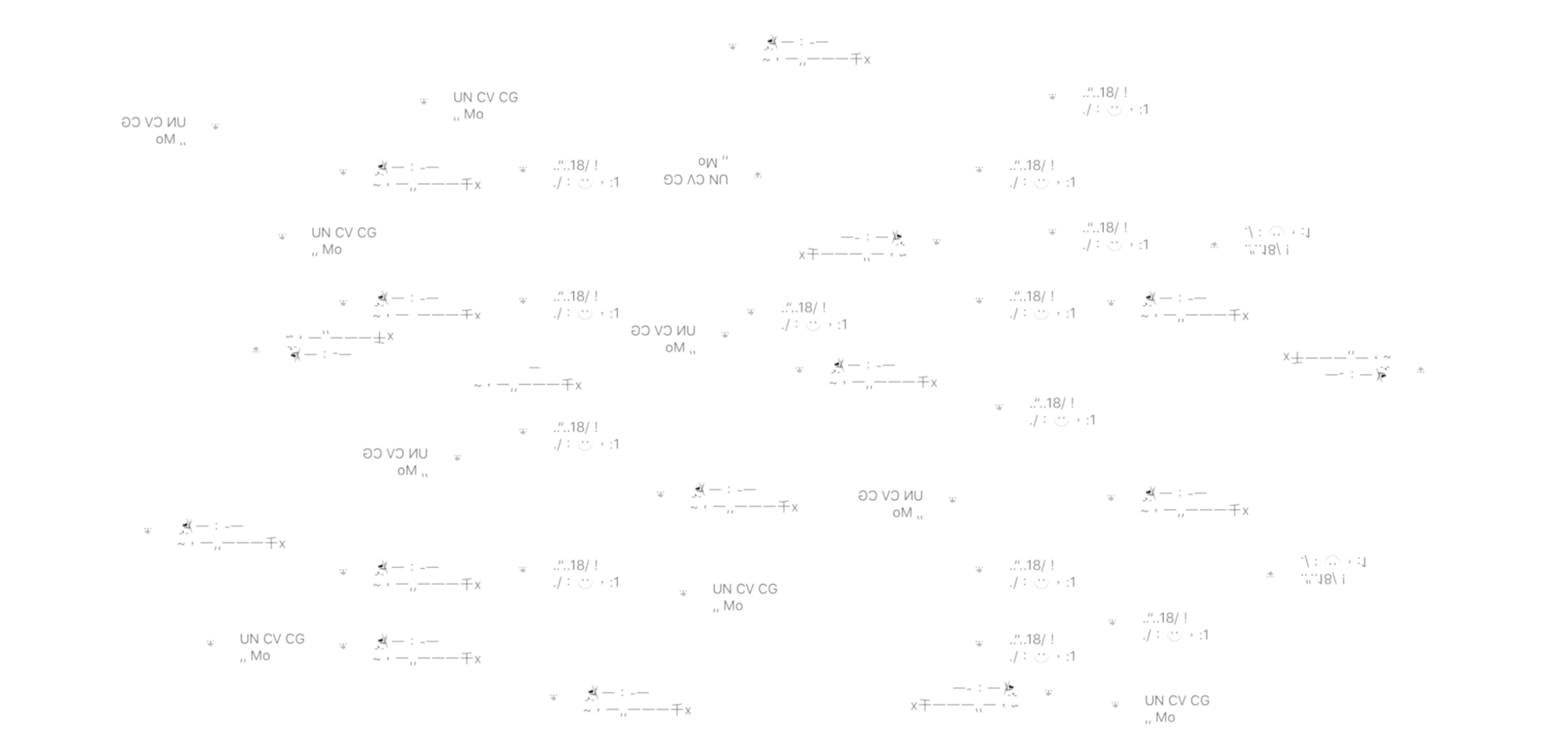
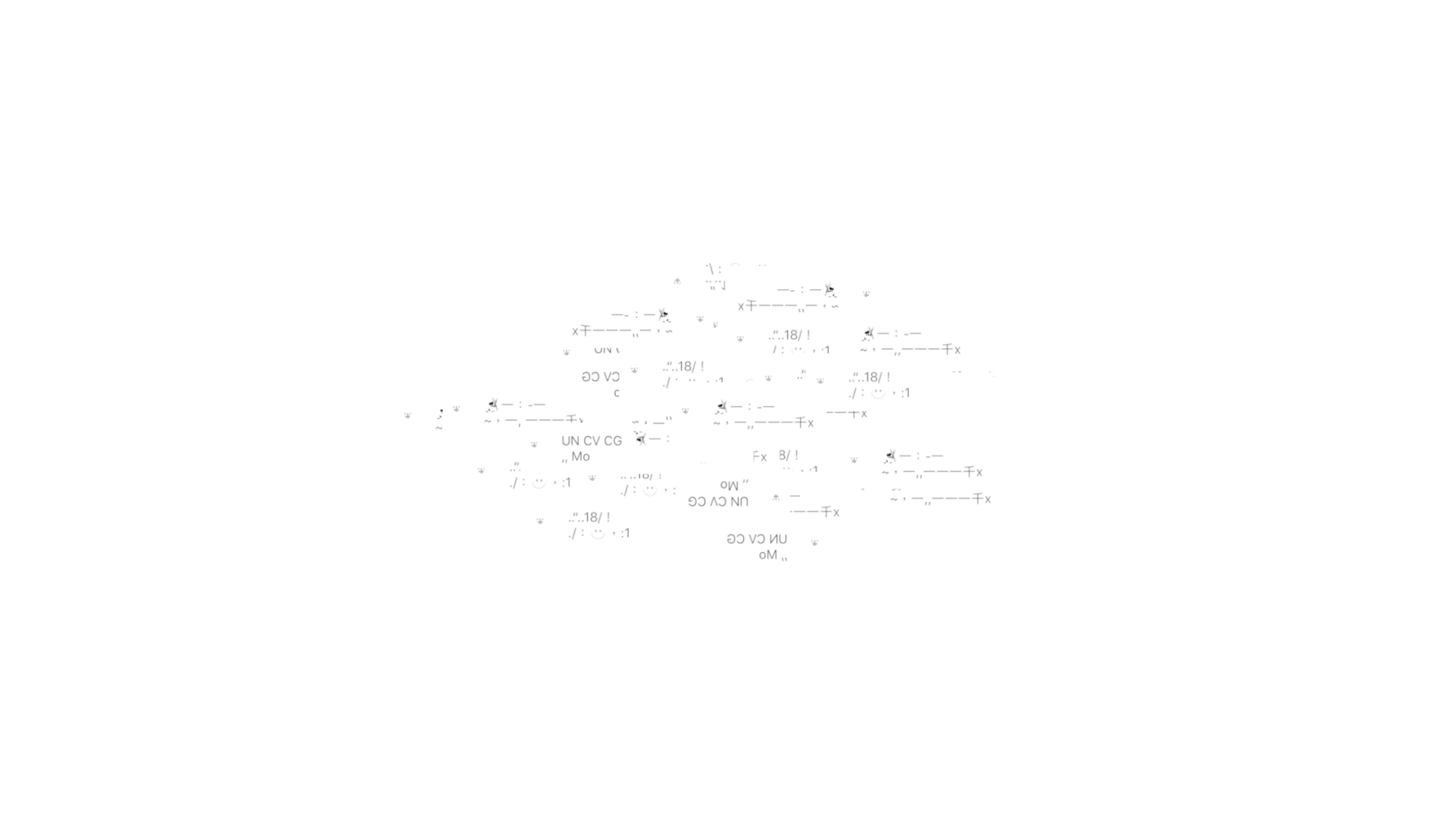
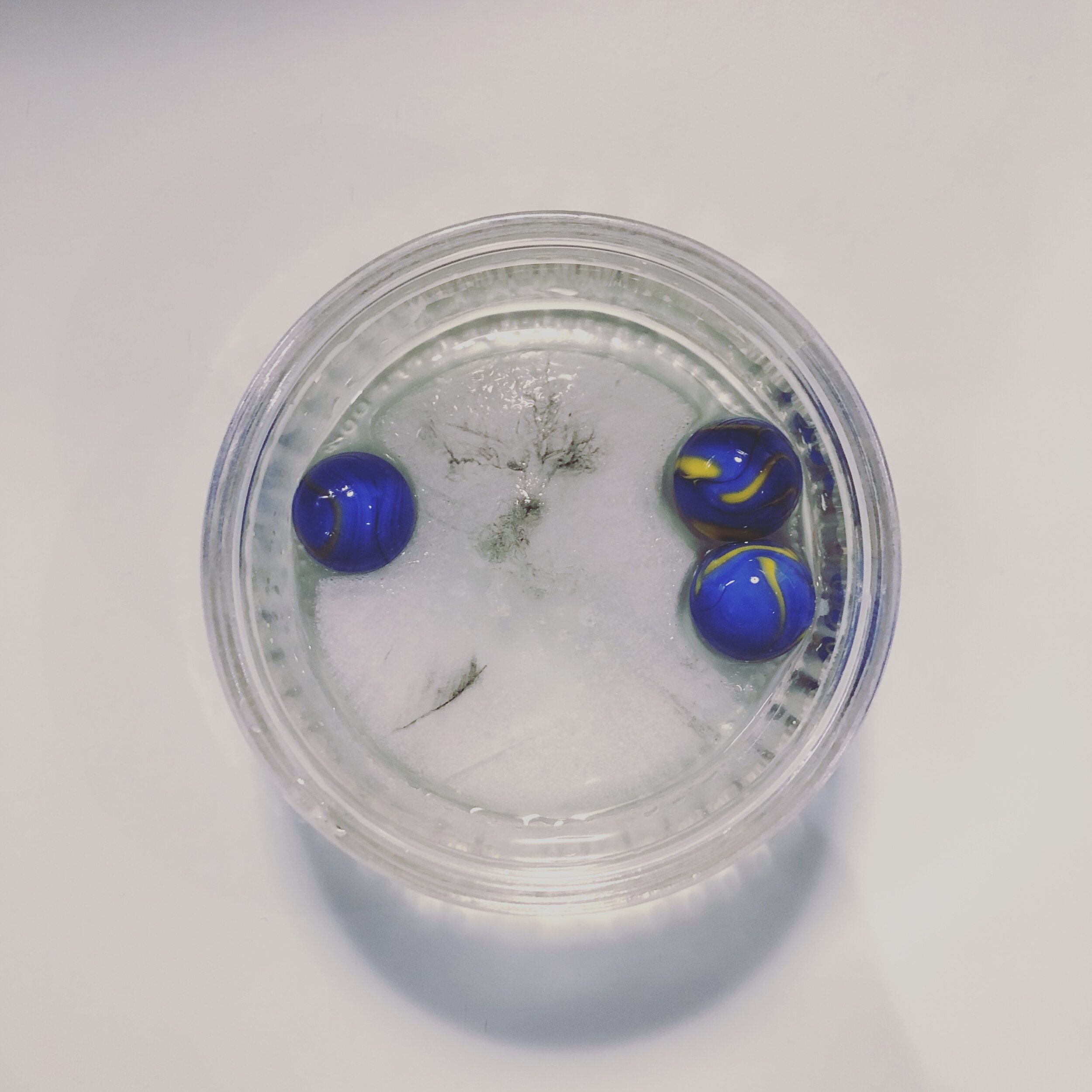


Matt Harding / Voicemails
“...the starting point for the work was based on some lost voice messages from my mother after she had died...”
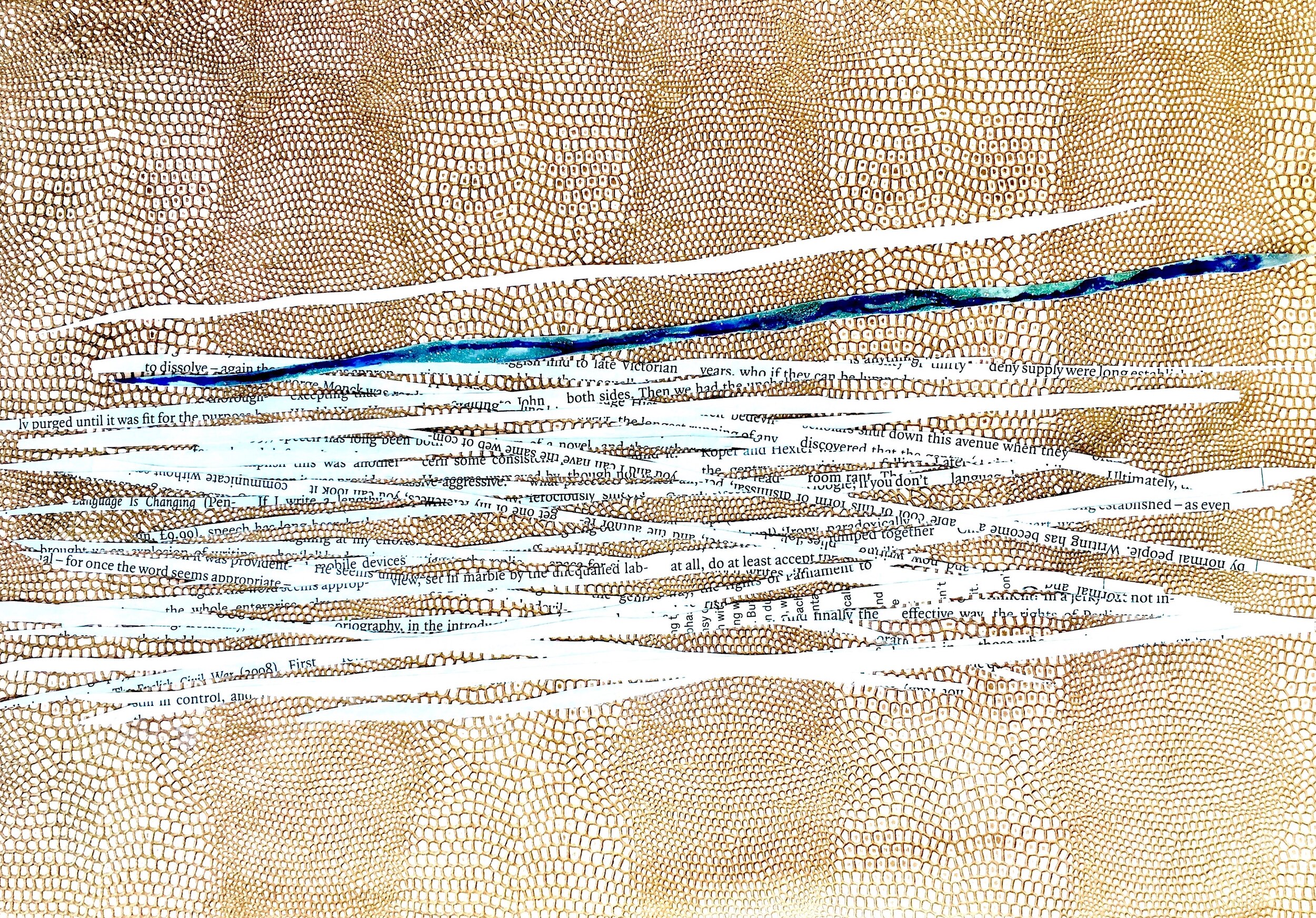
Ava Halloran / D R I P S
Drips is an experiment, a reflective process that I have developed in response to the Her Noise Archive. Based on the archive’s map, I imagined who I would add to expand it. For this work, I interviewed LA-based vocal, visual and performance artist, Anna Homler. I was particularly interested in her Pharmacia Poetica collection, her own invented language and her early performance work, the Breadwoman.
Based on the content of our trans-atlantic conversation over the phone, my work illustrates a dialogue between Anna Homler and myself. Rich in lyrical, symbolic and poetic language, I explored the interview by deconstructing it through collage and cut-up techinque, following themes of communication, sound, gender and archive. The interesting part of the exchange lies in its complete improvisation - my 'well' prepared sheet of questions was challenged by Homler asking me to translate them from academic to everyday life language.
The title Drips, a repetitive process itself, is a synonym for connection and the movement of ideas, a term taken from Homler who used it several times during our exchange. They are the drips of communication between myself, Homler and the Her Noise archive. Drip by drip, the slow singular sounds connect and progressively build up into new forms and a new language.


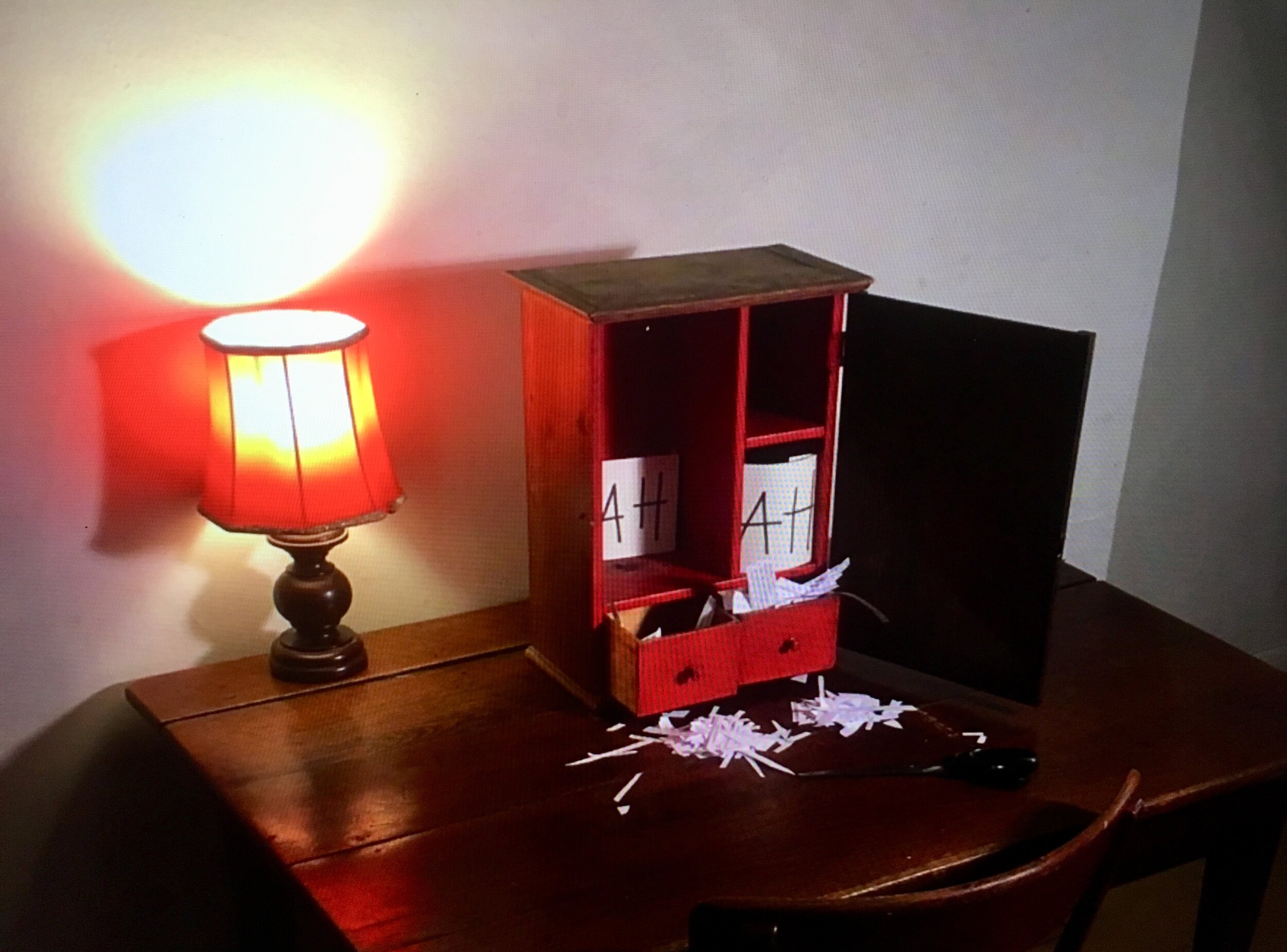
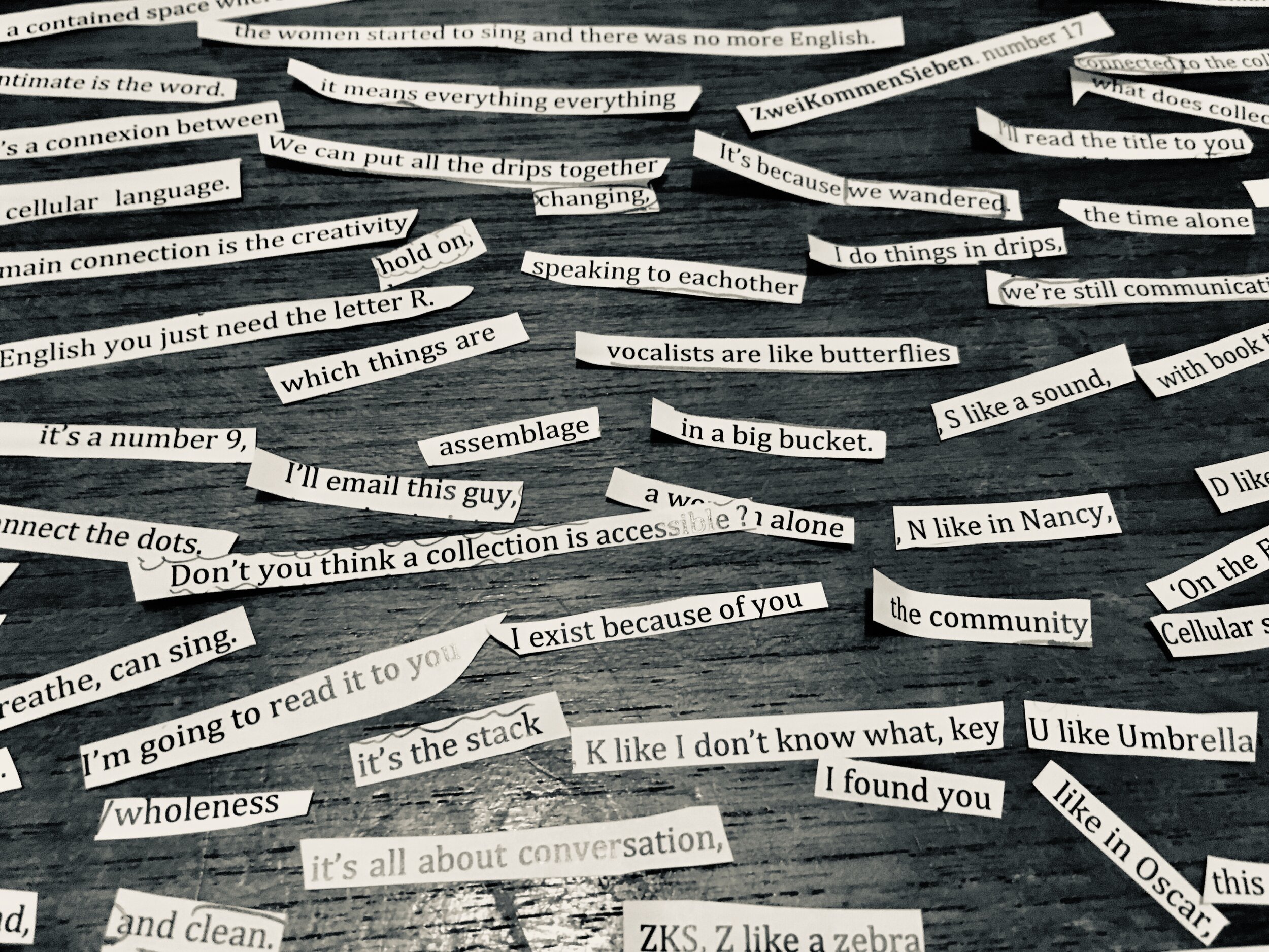
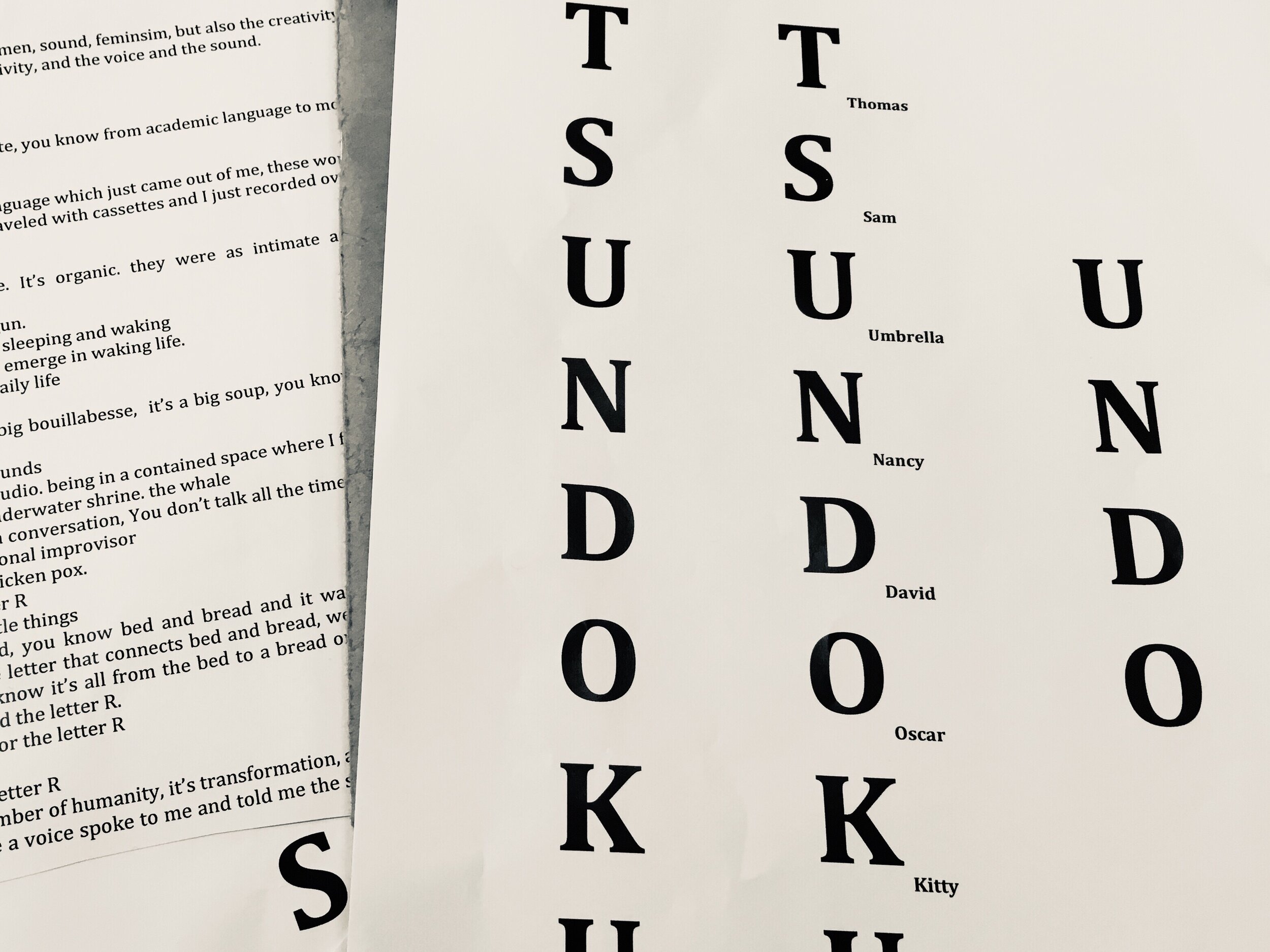

Anuka Ramischwili-Schaefer / tbili
“This piece is a response to the layers and multiple meaning-making mechanisms of the archive. Specifically, tbili relates to translation and the warping of language and information. I play on my memories of watching TV in Post-Soviet Georgia, where lack of film and television industry has resulted in a reliance on dubbing. Often, a single actor will voice an entire cast and narration, with multiple layers of original and previously-translated languages audible in the back; Turkish, Russian, English. The result can be a disorienting cacophony. tbili is based around a poem, with literal word for word translations into a dozen languages splitting meaning and capturing new realities.”
— Anuka Ramischwili-Schaefer
Anna Celeste Edmonds / Listen, Don’t Touch
Pole dance is considered a predominantly tactile and visual performance, known for it’s dark
stage, smoke and mirrors. The solo dancer captivates you and for the duration of the
performance, you are allowed to escape into their personal space.
Listen Don’t Touch is a sound recording of a pole dance performance, with no background
music and no visuals other than an accompanying graphic score. It was recorded with two
microphones – one ‘audience level’ condenser microphone, and a homemade contact
microphone attached to the base of the pole where it meets the stage.
The purpose of the work is to expose the reality of a seemingly sensual performance, to
uncloak the dance and show it for what it truly is – a long and hardworking series of
movements that require strength, power and focus. But whether the sensuality is lost, or has
found a new and different form, is in the hands of the listener.
Tomoko Hojo / Making Documentation of That Moment
How can artists document the past performance vividly, moreover, how can documents be used to represent that performance clearly? This question is based on the fact that a performance’s document is not an artwork itself, but always regarded in a secondary position. Making Documentation of That Moment is a project that explores this inescapable issue through documenting a performance and the unrelated occurrences of that moment. In this process eight performers left ephemera such as a video, sound file, objects, photographs, and diaries, and as a result, these uncompleted documents show the “real” happens in different phases, not only in the past event.
どのようにしてアーティストは過去のパフォーマンスを「そのまま」記録することができるのか。そして、その記録は過去のパフォーマンスをクリアーに表象するためにどのようにして使われうるのか。これらの疑問はパフォーマンスの記録はアート作品それ自体ではなく、常に二次的な位置づけに置かれるという事実に基づいている。Making Documentation of That Moment は、パフォーマンスとそれをとりまく出来事——直接的に関係しないかもしれない出来事も含める——をさまざまな方法で記録することを通じて、この避けられない問題を探求する。プロジェクトの中で行われたパフォーマンス(公園の池でボートに乗ってアリソン・ノールズのPiece for any number of vocalistsを演奏する)では、4 人が歌い、後の3 人はそれぞれ写真、音、ヴィデオの記録をおこない、1 人(アーティスト)だけが観客として参加した。
会場で展示されるものは、パフォーマンスそのものではなく、参加者の勘違いや言い間違いなどいくつかの食い違いを含む、不完全な記録物である。この不完全さは過去の出来事を完璧に記録することの不可能性を逆説的に証明する。Making Documentation of That Moment は、記録の過程で起こった間違いも一つの事実=出来事として捉えることで、複数の事実を創出し、過去の出来事と記録がもつパフォーマティブな関係性を可視化させる。





